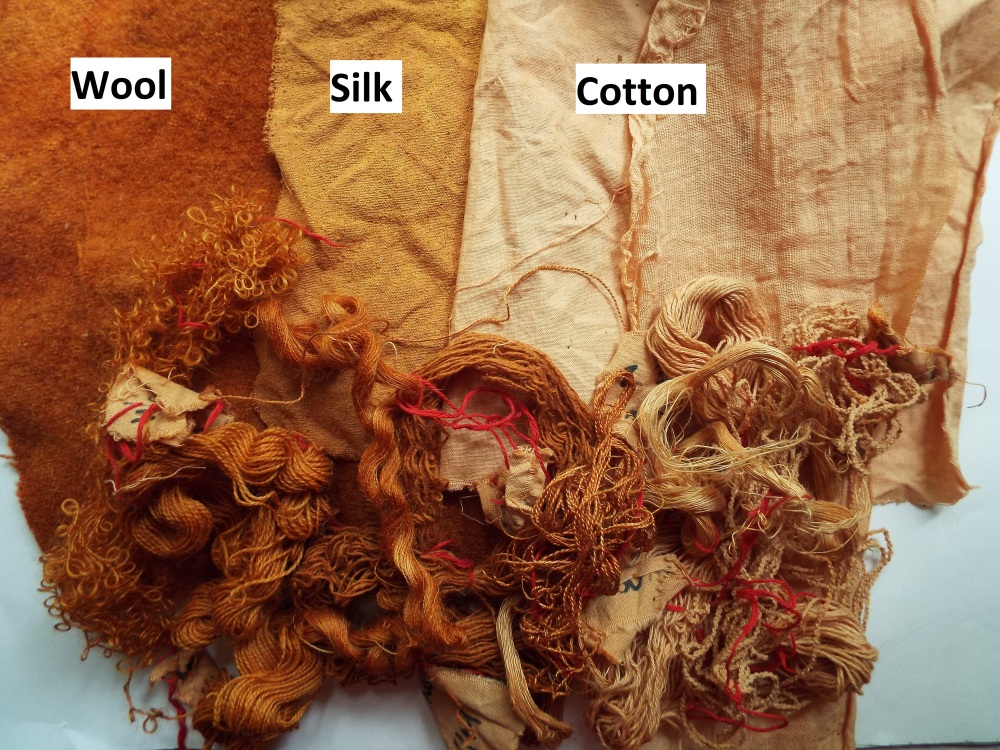Onion skins are readily available and a good way to begin exploring natural dyeing. Both yellow skins (golden yellow to rust shades) and red skins (greens and brown colours) can be used separately or mixed together.
Onion skins are a substantive dye material (does not requires a mordent to fix); the colour will be relatively fast, but may fade in the light and washing. This process works best on wool or silk; cellulose fibres such as cotton and linen produce paler shades.
Equipment
Hob, saucepan, colander, a spoon or tongs to handle the hot fibres, bucket and detergent to wash fibres, rack to dry dyed items.
Method
Use only the dry onion skin, and not the fleshy part – ensure it is free from black mould, and leave to dry out in a paper bag. As a general rule for all natural dyes, 100g of dye stuff to every 100g of dry weight fibre. Ideally use a stainless steel pan, large enough for the yarns to move comfortably.
- Loosely tie any yarns into skeins to prevent tangling. Wash the yarns/fabric in mild detergent, leave damp for a stronger colour.
- Simmer the onion skins for 30-45 minutes in the saucepan. Strain the onion skins into a colander, but keep the dye liquor. Spent onion skins can be used for compost.
- Place yarns and fabric in the pan and simmer for 30 minutes. Gently stir and reposition the yarns to get an even dye.
- When complete allow to cool in the dye bath, to reduce the risk of felting. Rinse in cold water, and leave to dry naturally.
It is a good idea to keep notes and samples for future reference. Many natural dyes will fade in sunlight – save a small scrap and leave in a sunny window to determine if it is light-fast.
Results

Surprising strong colours can be obtained from onions skin. Protein fibres such as wool and silk produce the best results, with paler colours on cellulose fibres such as cotton.
Health and Safety
This method uses food stuffs, making it okay to work in the kitchen with cooking utensils.
- Dying is messy – wear old clothes, and rubber gloves through the dying and rinsing process.
- Beware of scalds when working with hot materials.
- Wash all utensils thoroughly after use.
This is only a basic overview. Many of the plants used in dyeing are poisonous, while mordents can be hazardous to both health and the environment. If you plan to explore dyeing further, you must have specially reserved dyeing utensils and equipment, and preferably not work in a food preparation area. Familiarise yourself with any hazard associated with any chemical you are using, and wear personal protective equipment as required.



Lovely experiment you have here! I only just started to dye wool and used food coloring as I don’t have separate equipment to work with acid dyes as they are not food safe. You say you don’t need a mordant to dye with onion skins, but could you use vinegar to make them colorfast?
LikeLike
I haven’t tried vinegar with onion skins, but will try it to see if it improves lightfastness or changes the colour. Thanks for the tip!
LikeLiked by 1 person